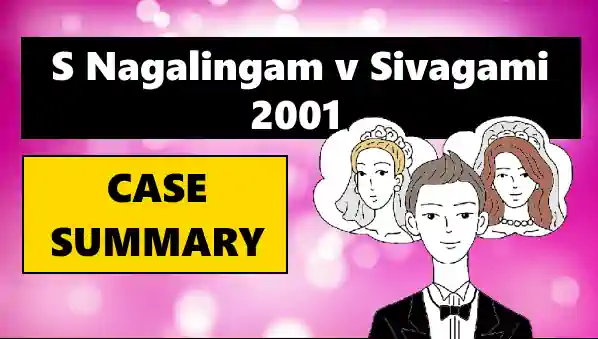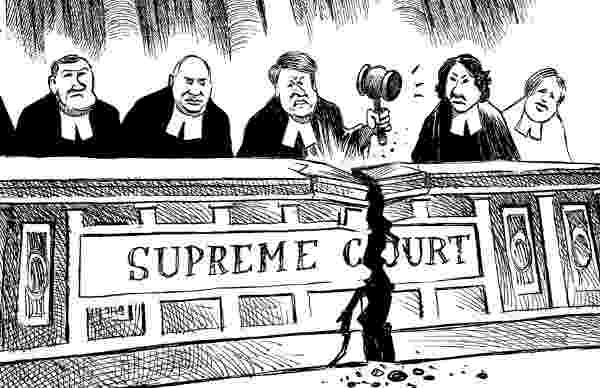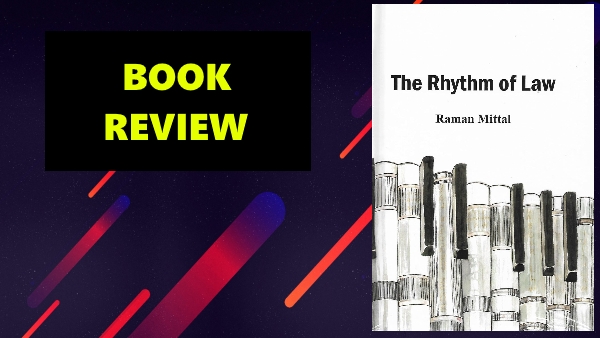In S Nagalingam v Sivagami case, the respondent preferred a criminal appeal before the High Court of Madras aggrieved by the judgment of the learned Metropolitan Magistrate. The impugned judgment of the learned Single Judge stating that the appellant had committed the offence punishable under Section 494 of the Indian Penal Code is challenged before the concerned court.
CITATION: (2001) 7 SCC 487
BENCH: D.P. MOHAPATRA & K.G. BALAKRISHNAN, J.
FACTS OF S NAGALINGAM vs SIVAGAMI CASE:
- That the marriage between the appellant and the respondent took place on 6th September 1970 and three children were born from that wedlock.
- The respondent alleged that she had been a victim of domestic violence as a result of which she started living with her parents.
- Later a criminal complaint was being lodged before the Metropolitan Magistrate by the appellant, contending that the appellant had contracted the second marriage with a woman named, Kasturi and their marriage was solemnised in accordance with the Hindu rites on 18th June 1984 within the state of Tamil Nadu. In order to support this contention, detailed evidences were provided regarding the manner in which the marriage was being performed on 18th of June.
- The order of acquittal was being passed by the Trial Court. Aggrieved thereby, the respondent filed criminal appeal No. 67 of 1992 before the High Court of Madras.
- Upon further cross-examination of the priest and the accused, the learned Single Judge held the appellant to be guilty of the offence of bigamy as the second marriage was contracted during the subsistence of his earlier marriage. This impugned judgment of the learned judge was challenged before the court.
LEGAL ISSUES:
- Whether the second marriage entered by appellant with the second accused, Kasturi on 18.6.1984 constitute a valid marriage under the Hindu Marriage Act, 1955 ?
- Whether “Saptapadi” is an essential ritual to be performed for the solemnisation of a marriage?
- Whether the essential ingredients of the offence under Section 494 are complied in the present case?
RATIO DECIDENDI:
In the instant case, the appellant and his alleged second wife are residents of the State of Tamil Nadu and their marriage was performed within the state.
In the Hindu Marriage Act, 1955 there is a State Amendment by the State of Tamil Nadu, which has been inserted as Section 7-A, which applies to any marriage between two Hindus solemnized in the presence of relatives, friends, or other persons. The main thrust of this provision is that the presence of a priest is unnecessary to constitute a valid marriage.
It was testified by the witness that the bridegroom brought the “Thirumangalam” and tied it around the neck of the bride and thereafter the garlands were exchanged and the father of the bride stated that he was giving his daughter to “Kanniyathan” on behalf of and in the witness of “Agnidevi” and the acceptance of the same by the father of the bridegroom clearly shows that the marriage was being performed under the custom applicable to the parties.
Thus, regarding question (1), it could be concluded that the marriage between the accused and the alleged second wife was valid under Section 7A of the Hindu Marriage Act, 1955.
Regarding question (2), they have contended that “Homa” and “Saptapadi” are the two essential ceremonies to be performed in order to constitute a valid marriage under Hindu law.
[Case Reference: Laxmi Devi v. Satya Narayan; Smt. Priya Bala Ghosh v. Suresh Chandra Ghosh]
Saptapadi was held to be an essential ceremony for a valid marriage only in cases it was admitted by the parties that, as per the form of marriage applicable to them, that was an essential ceremony.
Since, in the instant case, the appellant had no such case that the “Saptapadi” was an essential one among the members of the community to which they belong, the marriage between the appellant and the second accused, Kasturi is to be considered valid as per the personal law applicable to them.
In regard to question (3), the essential ingredients of the offence under Section 494 of IPC are:
- The accused must have contracted the first marriage;
- The accused must have contracted a second marriage during the subsistence of his earlier marriage;
- Both the marriages must be valid in the sense that the necessary ceremonies governing the parties must have been performed.
S NAGALINGAM vs SIVAGAMI JUDGMENT:
In light of the above discussions, it was held that the parties are governed by Section 7-A of the Hindu Marriage Act 1955, as the parties are Hindus residing within the State of Tamil Nadu.
Therefore, the Learned Single Judge was right in holding that the appellant had committed the offence of bigamy under Section 494 of IPC as it was done during the subsistence of his earlier marriage held on 06.09.1970. Accordingly, the matter was correctly remanded to the trial court for awarding the appropriate sentence and the appeal was dismissed.
Found S Nagalingam v Sivagami case summary useful? We have a bunch of useful topics from family law that will help you in your preparation here >>> FAMILY LAW
Check out our YouTube Channel for free legal videos >>> LAW PLANET YT





